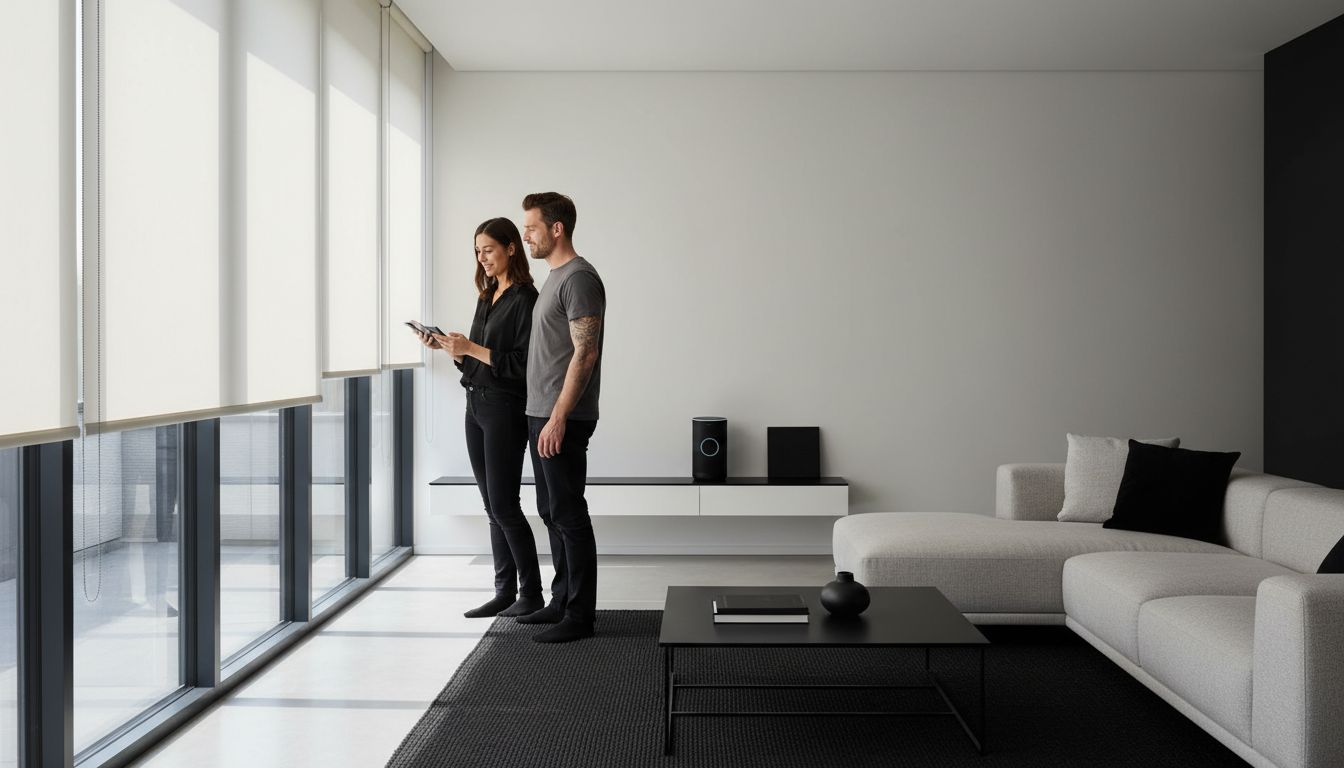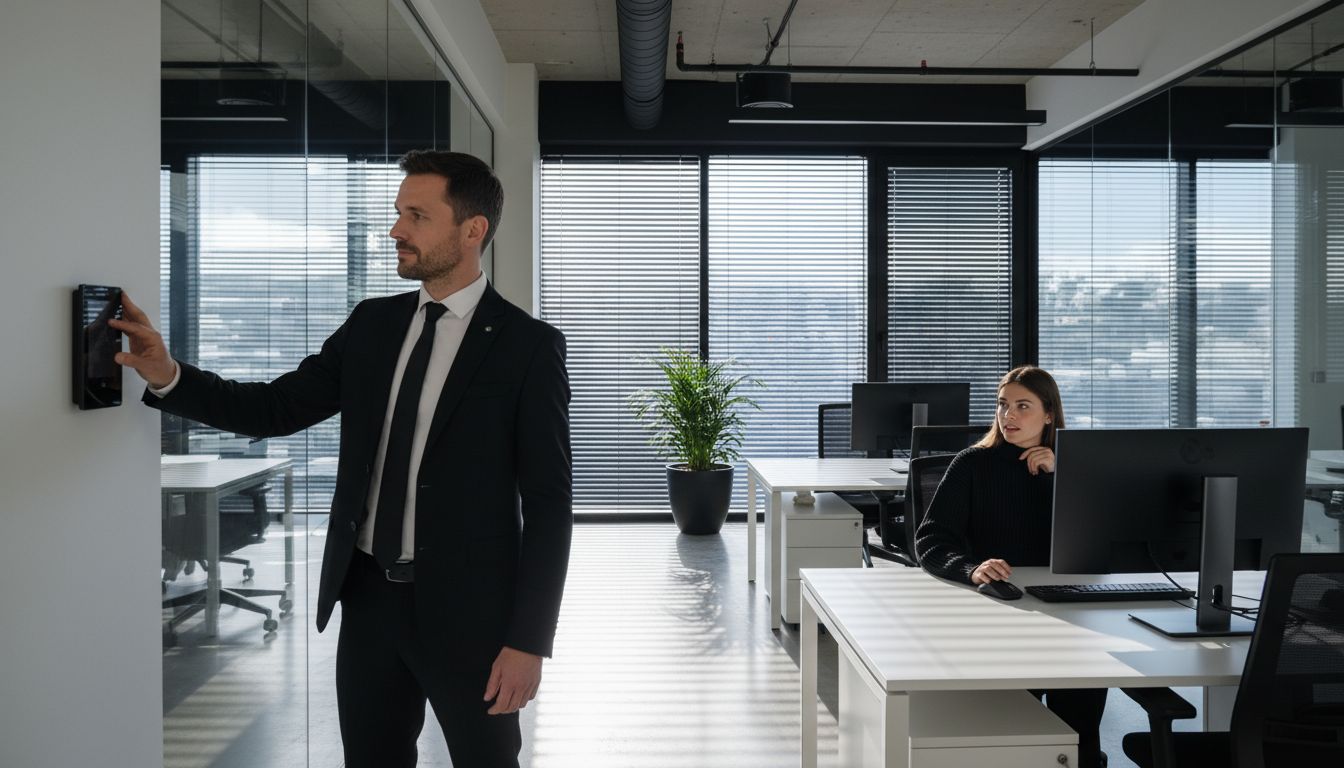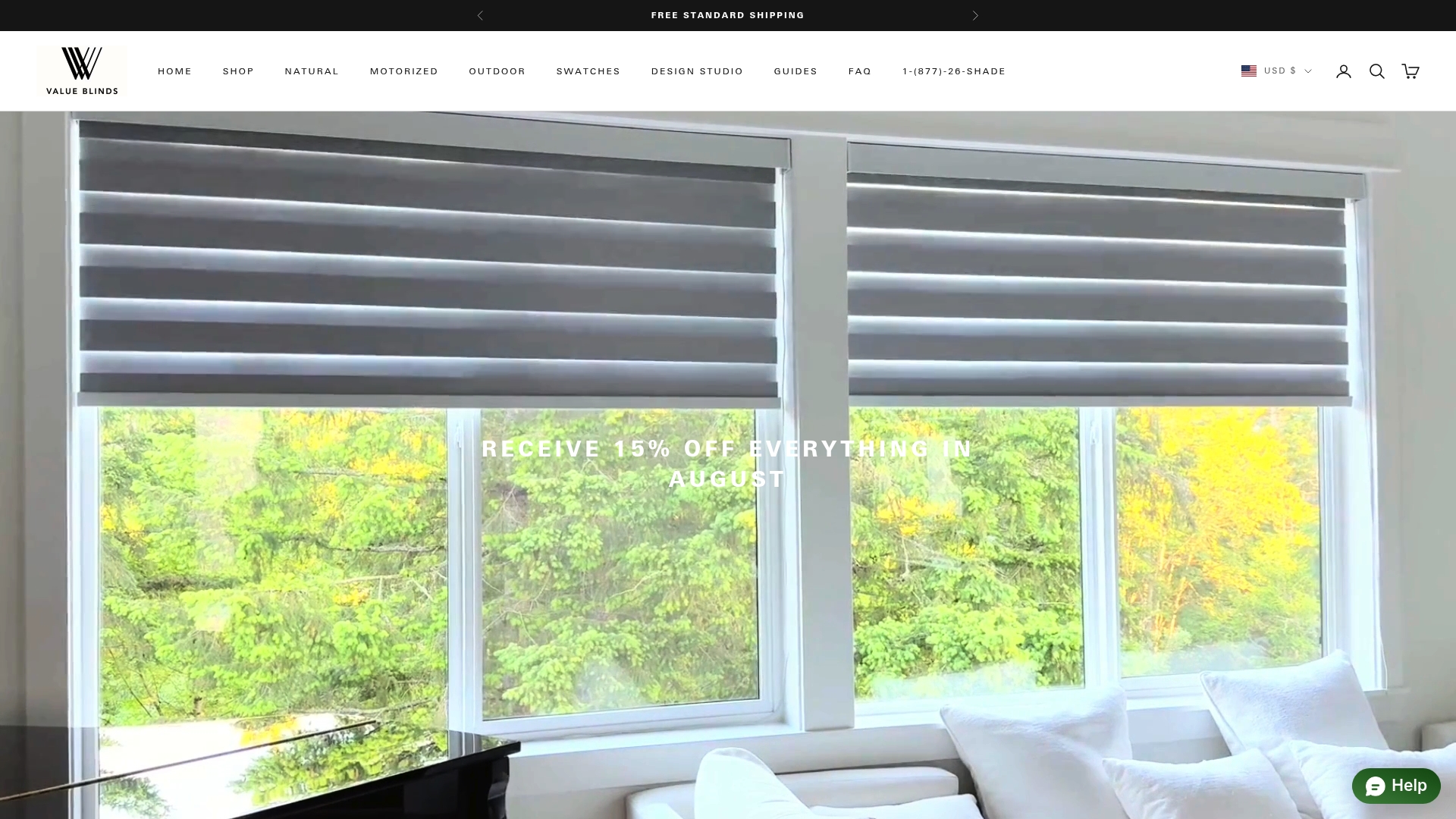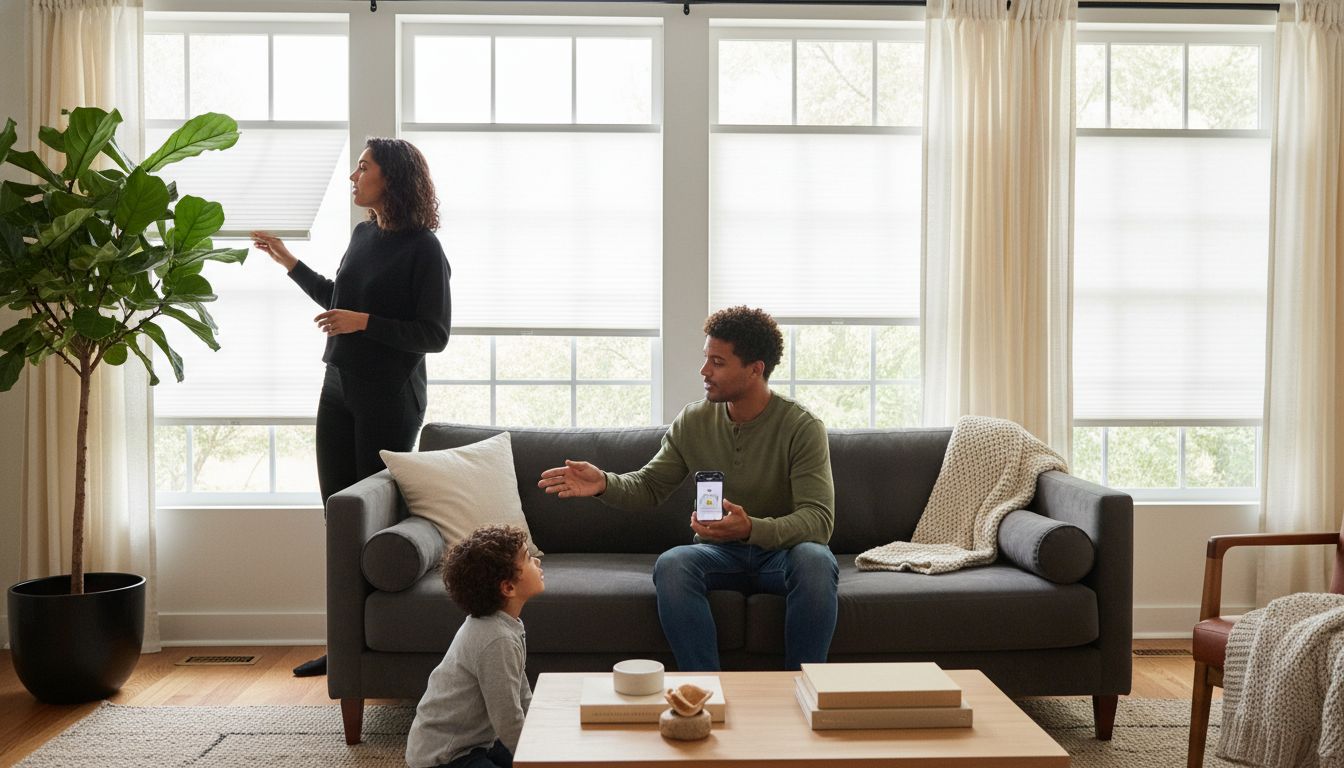
Motorized Blinds and Shades: Complete Guide
Over 60 percent of homeowners are interested in smart home upgrades, yet many overlook the impact of automated window treatments. The right blinds or shades can dramatically improve comfort, convenience, and even energy efficiency in your living space. As motorized blinds and shades become more popular, understanding their features, benefits, and how they fit into modern homes can help you make a confident, informed choice for your next upgrade.
Table of Contents
- What Are Motorized Blinds And Shades?
- Popular Types And Key Variations
- How Motorized Systems Work
- Customization, Control, And Smart Integration
- Costs, Installation, And Maintenance
- Comparing Motorized And Manual Options
Key Takeaways
| Point | Details |
|---|---|
| Convenience | Motorized blinds offer remote or automated control, facilitating easy light and privacy management. |
| Customization | Extensive options are available, including fabric, color, size, and material selections tailored to interior design. |
| Smart Integration | They seamlessly connect with smart home systems to enhance user experience through automated scheduling and environmental responsiveness. |
| Investment Value | Although initially more expensive, motorized blinds can improve energy efficiency and potentially increase property value over time. |
What Are Motorized Blinds and Shades?
Motorized blinds and shades represent a sophisticated evolution in window treatment technology, transforming traditional manual window coverings into intelligent, convenient home solutions. According to Carleton University, these are window coverings equipped with electric motors that enable remote or automated control, offering unprecedented ease of use and functionality.
Motorized window treatments fundamentally differ from traditional blinds by incorporating electric motors that allow precise, effortless adjustment. Unlike manual shades that require physical pulling or turning, these advanced coverings can be controlled through multiple interfaces:
- Remote controls
- Wall-mounted switches
- Smartphone applications
- Voice assistant integration
- Automated scheduling systems
The primary appeal of motorized blinds lies in their remarkable convenience and versatility. As Somfy highlights, these systems excel at managing light, privacy, and temperature with minimal human intervention. They are particularly beneficial for windows that are challenging to reach, such as high or awkwardly positioned openings in living rooms, bedrooms, or commercial spaces.

Beyond convenience, motorized blinds represent a significant leap in home automation. They seamlessly integrate with smart home ecosystems, enabling synchronized control of lighting, temperature, and privacy. Homeowners can program these systems to adjust automatically based on time of day, sunlight intensity, or even exterior weather conditions, creating an intelligent, responsive living environment that enhances both comfort and energy efficiency.
Popular Types and Key Variations
Motorized window treatments have evolved to offer a diverse range of styles and functionalities, catering to different aesthetic preferences and practical needs. According to Somfy, the market encompasses several distinctive motorized blind types, each bringing unique characteristics to interior design and light management.
Roller Blinds represent the most streamlined motorized option, featuring a clean, minimalist design that suits modern interiors. These blinds roll smoothly up and down with precise electric motor control, providing seamless light filtering and privacy management. Their simple mechanism makes them ideal for contemporary spaces seeking a sleek, uncluttered appearance.
Alternative motorized blind styles include:
- Venetian Blinds: Horizontal slats that allow granular light control
- Roman Blinds: Soft fabric panels that fold elegantly when raised
- Pleated Blinds: Crisp, structured designs with accordion-like folding
- Cellular Shades: Honeycomb-structured blinds offering superior insulation
Each motorized blind type serves different functional and aesthetic purposes. Venetian blinds excel at precise light adjustment, allowing users to angle slats for optimal illumination. Roman blinds introduce a luxurious, soft texture to rooms, while pleated blinds provide a structured, architectural look. Cellular shades stand out for their energy-efficient design, creating an additional thermal barrier for enhanced home comfort.
Beyond visual appeal, these motorized variations offer significant practical advantages. The electric control mechanism eliminates manual handling, reduces wear and tear, and provides accessibility for hard-to-reach windows. Homeowners can now customize their window treatments with unprecedented ease, integrating sophisticated light management directly into their smart home ecosystems.
How Motorized Systems Work
Motorized window treatments rely on sophisticated technological mechanisms that transform traditional manual blinds into intelligent, responsive home systems. According to Carleton University, these systems operate through electric motors designed to precisely adjust blind and shade positions with remarkable accuracy and ease.
The core components of a motorized window system typically include:
- Electric motor unit
- Control mechanism (remote, smartphone, wall switch)
- Gear and transmission system
- Power supply (battery or hardwired)
- Receiver/signal interface
At the heart of these systems, the electric motor performs the critical function of translating electronic signals into precise mechanical movement. When a user issues a command through a remote control, smartphone app, or automated schedule, the motor receives the signal and activates the gear mechanism. This mechanism then smoothly rotates or adjusts the blind’s position, enabling seamless light and privacy management.
Additionally, modern motorized systems offer advanced integration capabilities. As Somfy highlights, these window treatments can now connect with broader home automation ecosystems. This means your blinds can automatically adjust based on environmental conditions like sunlight intensity, time of day, or even synchronized with your home’s temperature control systems, creating an intelligent, responsive living environment that maximizes comfort and energy efficiency.
Power management is another crucial aspect of motorized blind functionality. Most systems offer two primary power configurations: rechargeable battery-powered units and hardwired electrical connections. Battery-powered motors provide flexibility in installation and can be easily retrofitted to existing windows, while hardwired systems ensure consistent power supply and eliminate the need for periodic battery replacements.
Customization, Control, and Smart Integration
Modern motorized blinds have revolutionized window treatments by offering unprecedented levels of personalization and technological integration. According to Somfy, these advanced systems provide homeowners with extensive customization options that go far beyond traditional window coverings.
Customization Options for motorized blinds are remarkably comprehensive, including:
- Fabric selections across multiple textures and opacity levels
- Color matching for precise interior design coordination
- Width and length customizations
- Material choices ranging from light-filtering to blackout fabrics
- Decorative edge and hem treatments
Control mechanisms have transformed dramatically, offering multiple interfaces for user convenience. Homeowners can now manage their window treatments through:
- Traditional remote controls
- Smartphone applications
- Wall-mounted digital switches
- Voice commands via smart home assistants like Alexa and Google Home
- Automated scheduling and environmental response systems
Smart home integration represents the pinnacle of motorized blind technology. These systems can now communicate with other smart home devices, creating synchronized environments that respond intelligently to changing conditions. Imagine blinds that automatically lower during peak sunlight hours, adjust based on room temperature, or coordinate with your home’s lighting and climate control systems for maximum energy efficiency.
The true power of these advanced window treatments lies in their ability to blend aesthetic customization with cutting-edge technological functionality. By providing granular control and seamless smart home integration, motorized blinds have transcended their traditional role, becoming dynamic components of an intelligent, responsive living environment.
Costs, Installation, and Maintenance
Motorized blinds represent a significant investment in home technology, with costs and complexity varying widely based on multiple factors. According to Carleton University, the overall expense of these sophisticated window treatments depends on type, size, customization, and installation requirements.
Cost Breakdown for motorized blinds typically ranges across three primary categories:
- Entry-level systems: $200-$500 per window
- Mid-range customized options: $500-$1,200 per window
- High-end, fully integrated smart systems: $1,200-$3,000 per window
Installation presents its own set of considerations and potential challenges. While some homeowners might successfully complete DIY installations, professional assistance is often recommended to ensure proper electrical connections, precise measurements, and optimal functionality. Factors influencing installation complexity include:
- Window accessibility
- Electrical wiring requirements
- Mounting surface characteristics
- Integration with existing smart home systems
Maintenance for motorized blinds requires a more nuanced approach compared to traditional window treatments. Battery-powered systems need periodic battery replacements, while hardwired installations demand occasional electrical system checks. Regular cleaning remains crucial, involving gentle dusting, occasional vacuuming, and careful handling of motorized components to prevent mechanical wear.
The long-term value of motorized blinds extends beyond their initial cost. By providing enhanced energy efficiency, improved home security, and seamless technological integration, these intelligent window treatments can potentially offset their upfront expenses through reduced energy consumption and increased property value. Homeowners should view them as a strategic investment in both comfort and home innovation.
Comparing Motorized and Manual Options
Choosing between motorized and manual blinds is a nuanced decision that extends far beyond simple aesthetic preferences. According to Carleton University, the fundamental differences between these two options encompass convenience, control, technological integration, and overall user experience.
A comprehensive comparison matrix reveals the key distinctions:
![]()
-
Convenience
- Motorized: One-touch or automated control
- Manual: Physical interaction required
-
Installation Complexity
- Motorized: Professional installation recommended
- Manual: Simple DIY-friendly setup
-
Cost Considerations
- Motorized: Higher upfront investment
- Manual: More budget-friendly initial purchase
-
Technological Integration
- Motorized: Seamless smart home compatibility
- Manual: Limited or no technological connectivity
For individuals with mobility challenges or windows in hard-to-reach locations, motorized blinds offer transformative benefits. The ability to adjust window coverings without physical manipulation becomes more than a convenience—it’s a quality of life enhancement. Voice-activated or scheduled adjustments mean rooms can dynamically respond to changing light conditions without direct human intervention.
Manual blinds, while more traditional, still hold significant appeal for budget-conscious consumers and those preferring straightforward, mechanical solutions. They require no electrical infrastructure, have lower maintenance requirements, and provide a tactile connection to home environment management. However, they lack the sophisticated features of their motorized counterparts, such as precise light filtering, automated scheduling, and integration with broader home automation ecosystems.
Ultimately, the choice between motorized and manual blinds depends on individual priorities. For tech enthusiasts, design-forward homeowners, and those seeking maximum convenience, motorized options provide unparalleled functionality. Conversely, those valuing simplicity, lower initial costs, and straightforward functionality might find manual blinds perfectly suited to their needs.
Discover the Ultimate Convenience of Motorized Blinds
Struggling with hard-to-reach windows or tired of manual adjustments that disrupt your comfort and energy efficiency Motorized blinds and shades offer the perfect solution to effortlessly control light, privacy, and temperature in your home or office. Whether you are seeking sleek roller blinds or advanced cellular shades the key is seamless customization paired with smart integration for a truly modern living space.
Experience the ease of automated schedules, voice controls, and remote access while elevating your home’s aesthetic with high-quality designs tailored just for you. Explore our collection of Trending Features to find motorized options that blend style and innovation perfectly.

Ready to transform your windows into smart, stylish statements With free swatches and expert support available at Value Blinds you can customize every detail and enjoy hassle-free installation. Don’t wait another day to enhance your comfort and home efficiency Shop our New Arrivals and experience the future of window treatments now.
Frequently Asked Questions
What are motorized blinds and shades?
Motorized blinds and shades are window coverings equipped with electric motors that allow for remote or automated control, enhancing convenience and functionality compared to traditional manual options.
How do motorized blinds work?
Motorized blinds operate through electric motors that receive commands via remote controls, smartphone apps, or voice assistants, allowing for precise adjustments to light and privacy without physical interaction.
What types of motorized blinds are available?
There are several types of motorized blinds, including roller blinds, Venetian blinds, Roman blinds, pleated blinds, and cellular shades, each offering unique characteristics for different aesthetic and functional needs.
What are the advantages of motorized blinds over manual blinds?
Motorized blinds provide greater convenience through one-touch or automated control, smart home compatibility, and accessibility for hard-to-reach windows, while manual blinds require physical interaction and are generally more budget-friendly.







